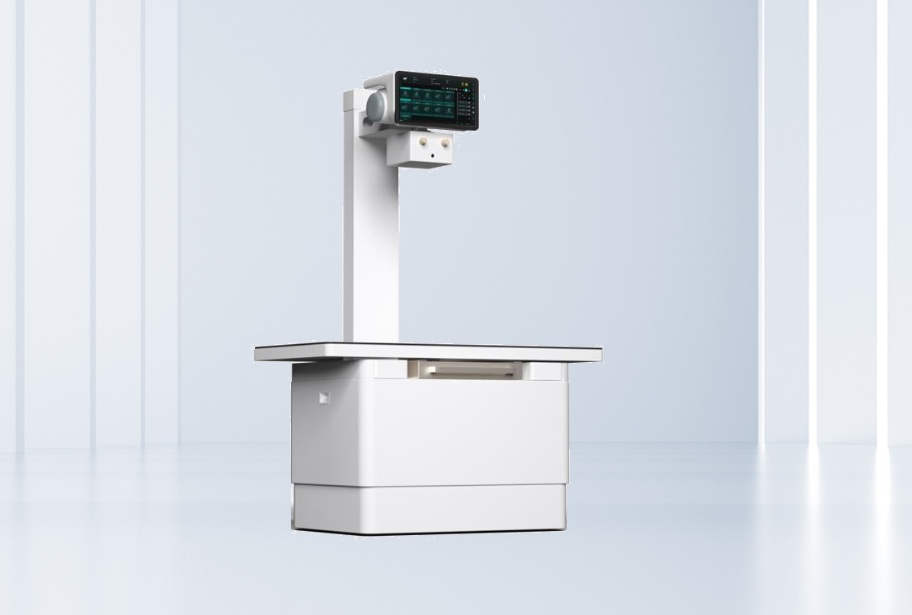As people increasingly focus on the health and well-being of their pets, the pet medical industry has embraced significant growth opportunities. Imaging diagnostics, a crucial component of modern healthcare, has become widely used in veterinary hospitals. Particularly in the field of pet imaging, advancements in technology and changing market demands have made animal imaging solutions an essential part of veterinary practices. Centered around a powerful image processing workstation and an advanced four-way floating tabletop with an electromagnetic locking system, along with OEM customization options, these solutions not only enhance diagnostic accuracy and efficiency but also significantly improve the treatment experience for pets.

Powerful Image Processing Workstation: Enhancing Image Quality and Physician Efficiency
The core of pet imaging equipment lies in its image processing workstation, which ensures that veterinarians obtain clear and accurate imaging data. During pet medical examinations, imaging techniques such as X-ray, ultrasound, CT, and MRI require high-quality imaging for accurate diagnostics. With an advanced image processing workstation, veterinarians can quickly acquire high-resolution images, enabling prompt and precise diagnoses.
The workstation's capabilities extend beyond image clarity, offering fast processing speeds and an intuitive user interface. Veterinarians can effortlessly adjust, compare, and analyze images via a touchscreen or mouse, completing these tasks in a short time and significantly improving clinical efficiency. Additionally, the image processing workstation supports various data storage and transmission methods, allowing veterinarians to archive imaging data or conduct remote consultations. This ensures that pet owners receive timely and professional medical advice for their pets.
Four-Way Floating Tabletop with Electromagnetic Locking: Enhancing Stability and Safety
Stability and safety are critical considerations in the design of pet imaging equipment. During imaging procedures, pets must maintain a specific position, as any unnecessary movement can compromise image quality and lead to diagnostic errors. To address this challenge, a four-way floating tabletop with an electromagnetic locking system is widely integrated into pet imaging solutions.
The floating tabletop allows for flexible adjustments, enabling precise positioning for pets of different sizes and weights. Whether for small cats or large dogs, pets can comfortably lie on the tabletop, minimizing motion-related distortions in imaging results. The system’s electromagnetic locking function ensures that the tabletop remains stable during image capture, preventing movement-induced image distortions. This feature not only guarantees stability but also enhances the overall safety and reliability of the imaging process.
Furthermore, the floating tabletop system allows veterinarians to swiftly adjust pet positioning as required for different examinations, further improving imaging efficiency. In cases where pets may not cooperate during the procedure, the flexible tabletop adjustments enable veterinarians to achieve accurate positioning effortlessly, ensuring optimal imaging quality and diagnostic precision.
A Preferred Choice for Veterinary Clinics: High Market Acceptance
As the pet healthcare industry continues to evolve, more veterinary clinics and hospitals are investing in advanced imaging equipment. Pet imaging solutions serve as an essential diagnostic tool, providing veterinarians with critical insights, especially for pets exhibiting unclear symptoms or requiring detailed examinations. Among the various imaging solutions available, those featuring a robust image processing workstation and a four-way floating tabletop with an electromagnetic locking system have become a standard choice for veterinary hospitals.
The widespread adoption of these devices is attributed not only to their advanced technology and superior performance but also to their ability to enhance operational efficiency in veterinary clinics. Given the high volume of patients that veterinary hospitals handle, an efficient imaging process shortens diagnostic time and improves overall service capacity. For pet owners, the ability to receive a rapid and accurate diagnosis for their pets is a top priority, making these imaging solutions highly sought after in the market.
OEM Customization: Tailored Solutions for Different Veterinary Needs
Every veterinary clinic and hospital has unique requirements, ranging from equipment size to operational preferences. Therefore, offering OEM customization services is crucial for meeting diverse veterinary needs. Through OEM customization, veterinary hospitals can select the most suitable imaging equipment configurations, ensuring that they meet both standard diagnostic needs and optimized workflow requirements.
The key advantage of OEM customization is its flexibility and adaptability. Clinics can choose tailored tabletop systems, image processing workstations, and user interfaces to better suit specific examination needs. For instance, some veterinary practices may prioritize equipment portability and ease of use, while larger hospitals may emphasize high-resolution imaging and powerful processing capabilities. Custom solutions with high-performance workstations and precision imaging sensors can provide an optimized balance between mobility, usability, and image quality.
Future Prospects of Pet Imaging Solutions
With the continuous advancement of the pet healthcare industry, imaging technology is set to play an increasingly vital role in pet disease diagnosis. Modern pet imaging solutions, incorporating powerful image processing workstations, four-way floating tabletops with electromagnetic locking, and OEM customization, effectively address the growing demand for efficiency, precision, and ease of use in veterinary imaging. Whether as a widely adopted standard system or a customized solution tailored to specific hospital needs, these innovations are revolutionizing pet medical care.
As technology progresses, the future of pet imaging equipment will become even more intelligent, with further improvements in image quality, user-friendly interfaces, and enhanced safety and stability. These developments will continue to drive the evolution of the pet healthcare industry, ensuring better medical outcomes for pets worldwide.



